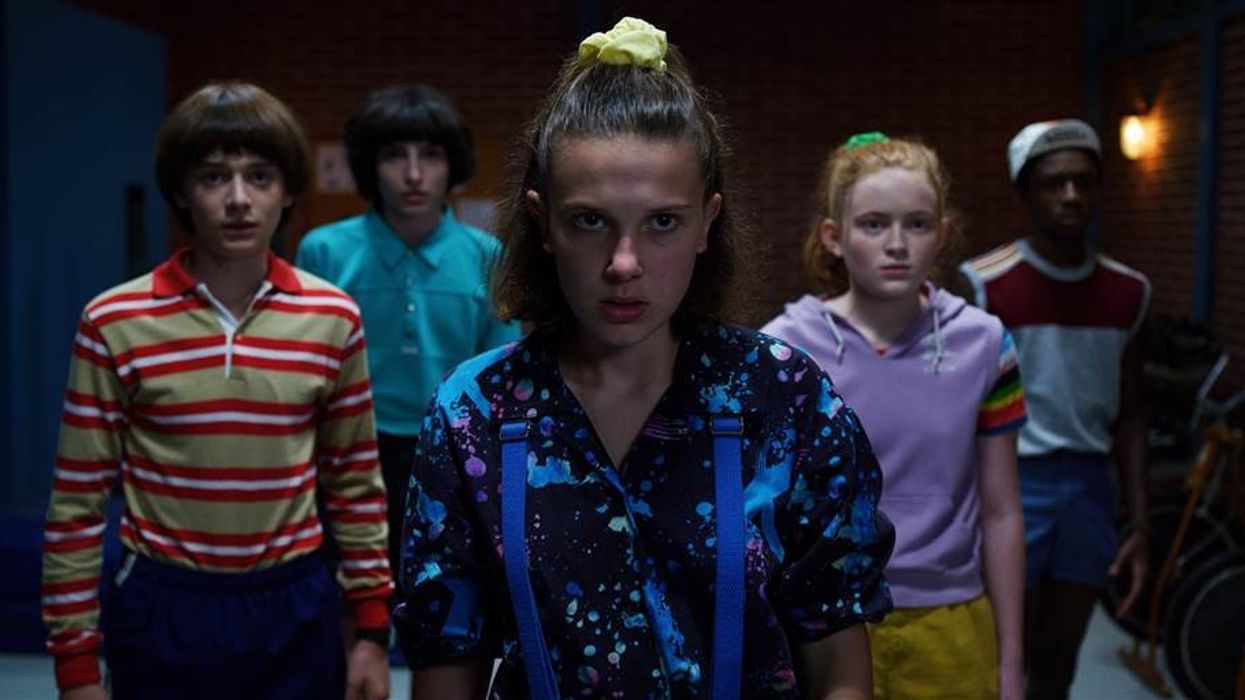How Does 'Stranger Things' Control the Tone of The Show?
Stranger Things nails a very specific tone. But how?

There's been an 80s revival inside Hollywood, and you have to believe that the nostalgic look and tone of the movies of yesteryear has been led by Stranger Things. The show, currently shooting its fourth season, is a cultural phenomenon.
One of the things I admire most about the show is its ability to balance its tone. Each 1-hour episode is funny, heartfelt, scary, and exciting all at the same time. This is no small task, and it takes a lot of delicate writing and direction to sell it to audiences.
Today, I want to dissect that tone and talk about how the show gets away with packing so much in.
Check out this video essay from Lessons from the Screenplay and let's talk after the jump.
How Does Stranger Things Control the Tone of The Show?
I love that this video examines how the unique tone of Stranger Things—a blend of sci-fi horror and 80s coming-of-age nostalgia—is conveyed in the show’s pitch deck, in the script, and on the screen. (You can download and examine the Stranger Things Pitch Deck here. At the time of the sale, it was tentatively titled Montauk...I'm glad they switched.)
The show had a difficult pitch ahead of it. I had to show how they would balance so many genres and ideas into something that felt cohesive.
It was cool seeing the sections of the deck reflected in the scenes we've seen in the show.
The highly visual deck had the Stephen King paperback feel, as well as hit movie references, like Jaws, ET, Poltergeist, and Stand By Me, so people understood the idea that the showrunners were going to be straddling many different ideas all at once.
When it came time to sell the story to an audience, the choices were much more clever than just telling people what they would do. So much of the show's writing and cinematography hinged on the homages of what came before it.
By adding these parts of the cultural lexicon into set pieces, the audience was eased into the blend of storytelling elements.
Take the opening eight minutes of the show...
We start on common horror tropes and move right into a coming of age story. The spooky lightning and camera movement stay consistent but the added musical elements let us know how to think and feel. I'm not sure Stranger Things could have existed without those movies and stories from the 80s, but one thing's for sure...the show refuses to just be one thing.
The show can also use all the tropes to its advantage. Like how it uses the monster POV: a scientist is chased down the hall, then a hard cut to the kids playing Dungeons and Dragons. This lightens the mood for the coming of age stuff that follows.
Tone is one of the hardest things to get right during a mashup because you want your story to feel like it has real stakes while also being able to crack jokes.
The Duffer Brothers took very special care to show that the humor could be—well—funny, but funny without being slapstick in nature. Why? Because every genre they try to use is grounded in the real world. Reality gives them homeostasis to fall back on after a crazy set piece set in the Upside Down or even a quiet scene where kids deal with drinking at a party.
What did you learn from the video? And how do you think Stranger Things balances its tone over multiple episodes and seasons? Let us know in the comments.
What's next? Learn How to Write TV Drama Pilot!
Hundreds of pilots sell to networks and streaming services every year. What's stopping you from selling your idea? Want to learn how to write a TV pilot? You've come to the right place.
Source: Lessons from the Screenplay













